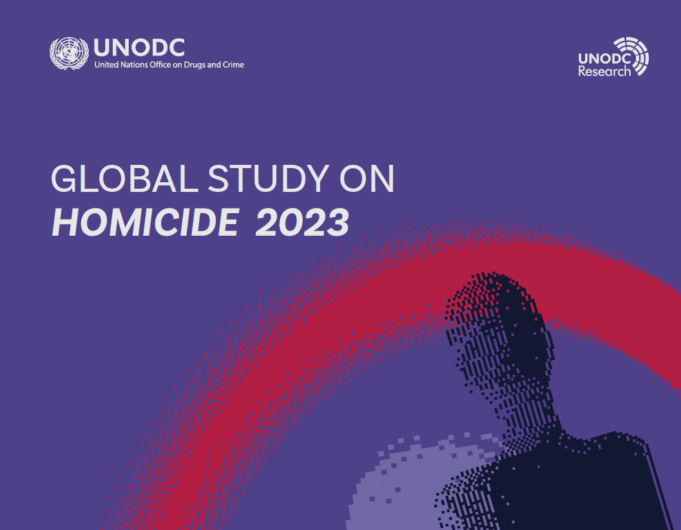The Global Study on Homicide analyzes the complex dynamics behind these violent deaths and includes a special section on how organized crime is driving death rates up in Latin America and the Caribbean.
The report examines homicides related to criminal activities and interpersonal conflict, as well as “socio-politically motivated homicides” such as the deliberate killing of human rights activists, humanitarian workers and journalists.
Consideration is also given to the impacts of “megatrends”—such as climate change, demographic changes, inequality, urbanization and technological shifts—and how they might influence homicide rates.
‘A somber reminder’
UNODC chief Ghada Waly said the loss of thousands of lives each year to homicide is “a somber reminder” of the collective failure of the international community to reduce all forms of violence by 2030, in line with the Sustainable Development Goals (SDGs).
“The complex web of factors fueling homicide deaths worldwide, from gender-based violence against women and girls, to organized crime and gang violence, to poverty and inequality, shows that there is no one-size-fits-all approach,” she said.
The report revealed that during the period from 2019 to 2021, an average of roughly 440,000 deaths worldwide were due to homicide—more than conflict-related or terrorist killings combined.
2021 ‘exceptionally lethal’
UNODC said 2021 “was an exceptionally lethal year,” marked by 458,000 homicides. The spike was in part linked to economic repercussions from the COVID-19 pandemic and to a rise in organized crime and gang-related and socio-political violence in several countries.
Furthermore, despite a more than 95 percent surge in conflict deaths between 2021 and 2022, available data shows that the global homicide burden in 2022 was twice that of conflict deaths.
Organized crime accounted for 22 percent of homicides globally, and 50 percent in the Americas, where competition among organized crime groups and gangs can spark a sudden and sharp rise in “intentional homicides”, as has happened in Ecuador and Haiti.
Homicide rates by region
The Americas also lead the world in the highest regional homicide rate per capita, with 15 per 100,000 population in 2021, or 154,000 people.
Africa had the highest absolute number of homicides at 176,000, or 12.7 per 100,000 population, “and available data suggests that the homicide rate is not falling, even as decreases have been registered in other regions,” the report said.
Meanwhile, rates in Asia, Europe and Oceania were far below the global per capita average of 5.8 per 100,000 population in 2021.
UNODC said the global homicide rate is projected to decrease to 4.7 in 2030, as evidenced by long-term trends. While this falls short of the SDG target of significantly reducing all forms of violence, it is still a promising trend, the agency said.
Weapons and victims
Firearms were used in most killings in the Americas in 2021, or roughly 75 percent, whereas in Europe and Asia they were involved in 17 and 18 percent of homicides, respectively.
Men accounted for 81 percent of homicide victims and 90 percent of suspects, but women are more likely to be killed by family members or intimate partners.
“Although they represent 19 percent of homicide victims in total, they account for 54 percent of all killings in the home and 66 percent of all victims of intimate partner killings,” UNODC said.
Additionally, 15 percent of homicide victims in 2021 were children, or 71,600 boys and girls.
Aid workers under attack
The data also showed that the deliberate killings of human rights defenders, environmental defenders, community leaders, journalists, and aid workers represented nine percent of global homicides.
“The threat has increased for humanitarian aid workers, who witnessed a higher average number of fatalities over the period 2017-2022 than 2010-2016,” the authors said.
Ms. Waly expressed hope that the report will help inform policies and responses that will address the root causes of violence and save lives.
UNODC expects that the effects of demographic, economic, technological, and climatic “megatrends” on homicide rates will likely vary per region.
Projections through the year 2100 indicate that Africa will be the most vulnerable region due to its younger population, persisting inequality, and climate-related shocks and stresses, according to the report. (UN News)













